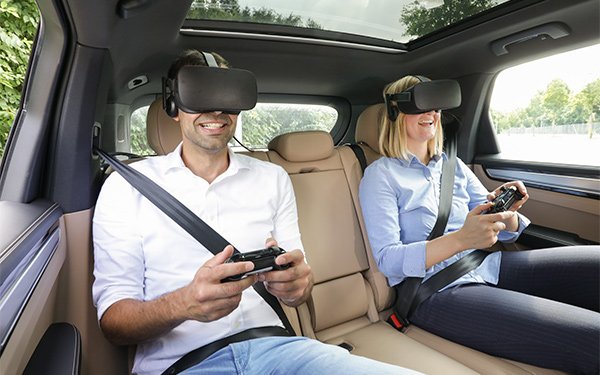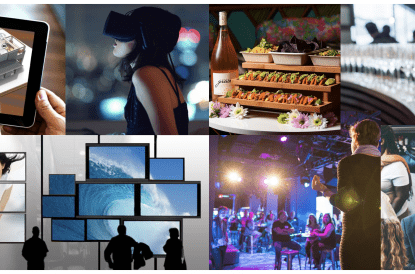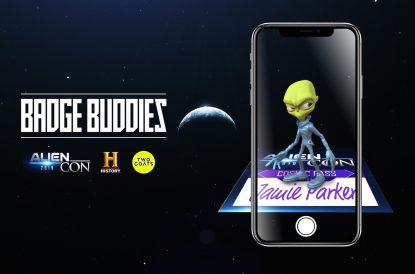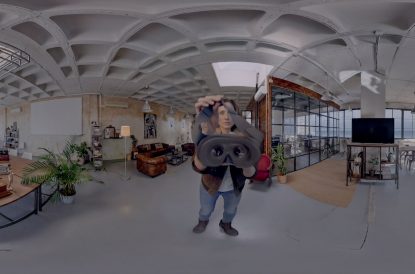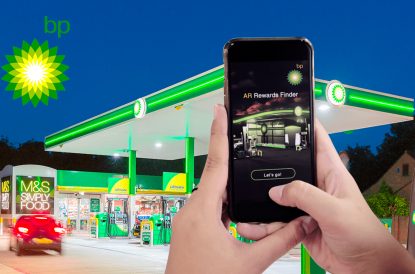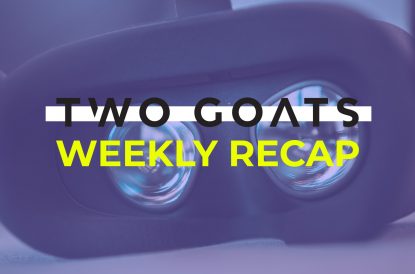Immersive News | 07/22/19

The main ingredient this week is big-name AR projects, with a pinch of VR education, a dash of headset entertainment, topped with stunning innovations in holograms.
50 years since Apollo 11:
AR experiences land from every company under the sun // REVIEW
To celebrate the anniversary of the moon landing on July 20, many major immersive players landed on the same concept: tell the story in augmented reality. Industry insiders are overwhelmed by the suite of AR experiences chronicling the mission and showcasing the newfound gorgeous imagery, but most of us likely only saw one of the following: New York Times, TIME Magazine, JFK Library, Microsoft HoloLens, Google Search, and USA Today, to name a few. Each of the experiences has their own intrinsic value and differentiated quality, but what made the Apollo 11 story so perfect for AR?
- Scale — consider the massive size of the Saturn V rocket and its proportionality in space travel.
- Presence — AR enables an authentic feeling of being there with Armstrong and Aldrin.
- Data — immersive media visualize and organize NASA data and photographs spatially.
- Detail — get up close with the intricacies of the spacesuits and the controls of the rocket.
- Timeline — track the 120 hour mission timeline or monitor in real time, so you can digest the experience without losing a sense of its magnitude.
- Explainer — AR provides rich visual context of of the rocket’s path in a way it could never before: 3D motion graphics capture the magnitude of our achievement in 1969.
- Interactivity — the experience connects and engages users to a previously abstract event, so you feel like you’re landing the ship yourself.
- In this case, Production timing — each of these brands had a far out deadline to which they could plan and produce. Independently they all came to the same conclusion of the correlation between this story and AR.
Brand stories that leverage these characteristics are perfectly suited for AR activations. What story will the industry converge upon next?
Read more: Next Reality, TIME/Variety (photo), USA Today/Variety (photo), NYT (photo), JFK/Variety (photo)
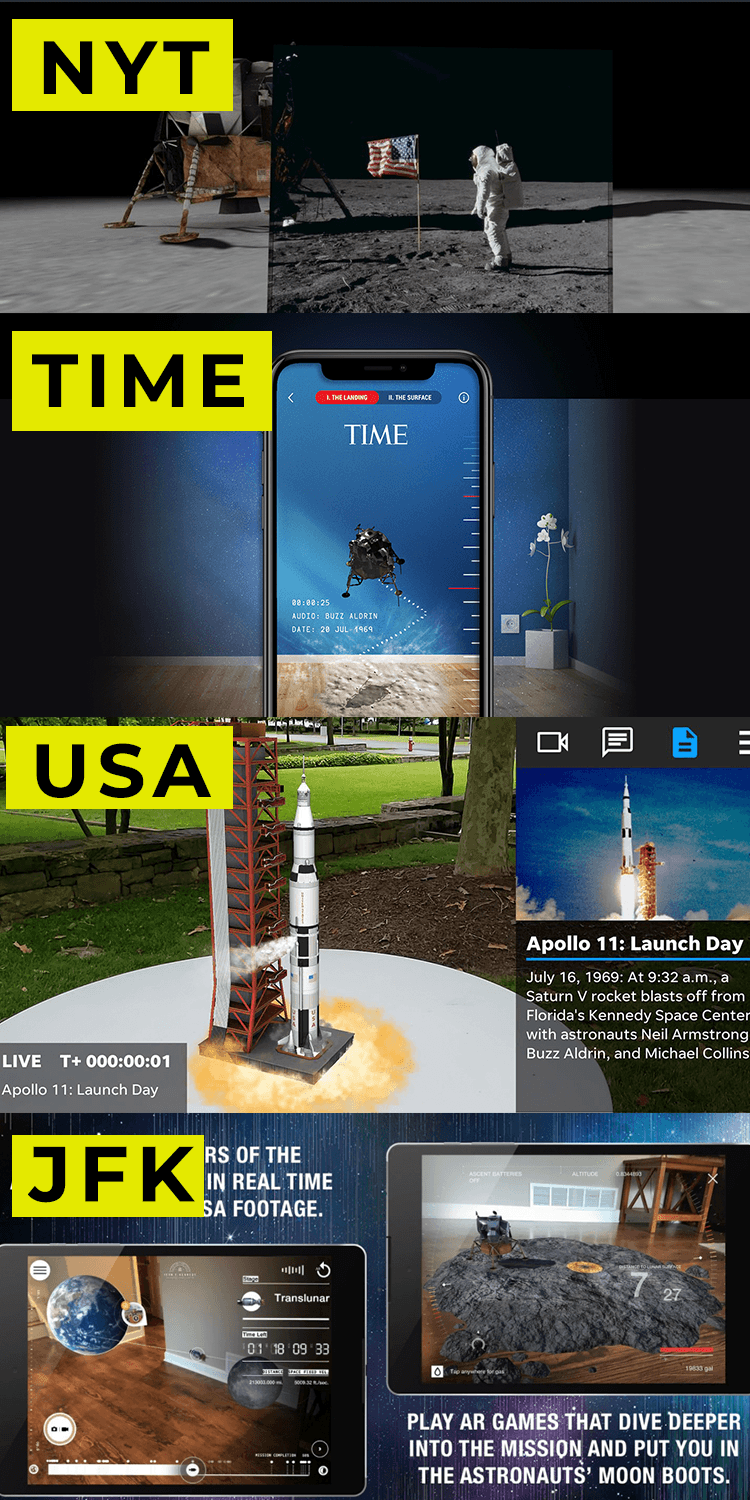
Be two places and speak two languages at once with Microsoft’s holographic cloning tech
At Julia White’s keynote at Microsoft Inspire last week, she debuted a holographic clone of herself that translates her talk into Japanese. Recorded with a volumetric capture studio, and built with Azure AI and neural text-to-speech, the hologram flexes the massive capacity of the HoloLens 2. (The Verge)
Emmy nominees for “Outstanding Innovation in Interactive Media” feature two VR experiences
Vader Immortal: A Star Wars VR Story and Wolves in the Walls are nominees at the 2019 Emmy Awards. The ILMxLAB and Fable Studio projects are up for the juried category “Outstanding Innovation in Interactive Media.” In past years, these juried awards were presented at the Creative Arts Awards ceremonies in early September, prior to the Primetime Emmys.
The Vader piece is innovative in its cinematic gameplay: in short, players are captured by Darth Vader. Endowed with The Force, players fight in lightsaber battles to escape Vader’s grasp — the narrative will continue to unfold across multiple episodes. Users are pivotal parts of the story, and the stakes are high for their interactivity: indeed, the cinema/game crossover “challenges the status quo.” Wolves in the Walls is a two-episode experience in which viewers take the perspective of protagonist Lucy’s imaginary friend. The disruptive interactivity in this project is the user’s directive to help Lucy find clues that there are wolves hiding in the walls of her family’s home. The Emmys are celebrating the unique agency in these experiences: Vader and Wolves blur the lines between viewer and player.
Read more: Wolves (photo), Vader (photo), Emmy website, VRScout
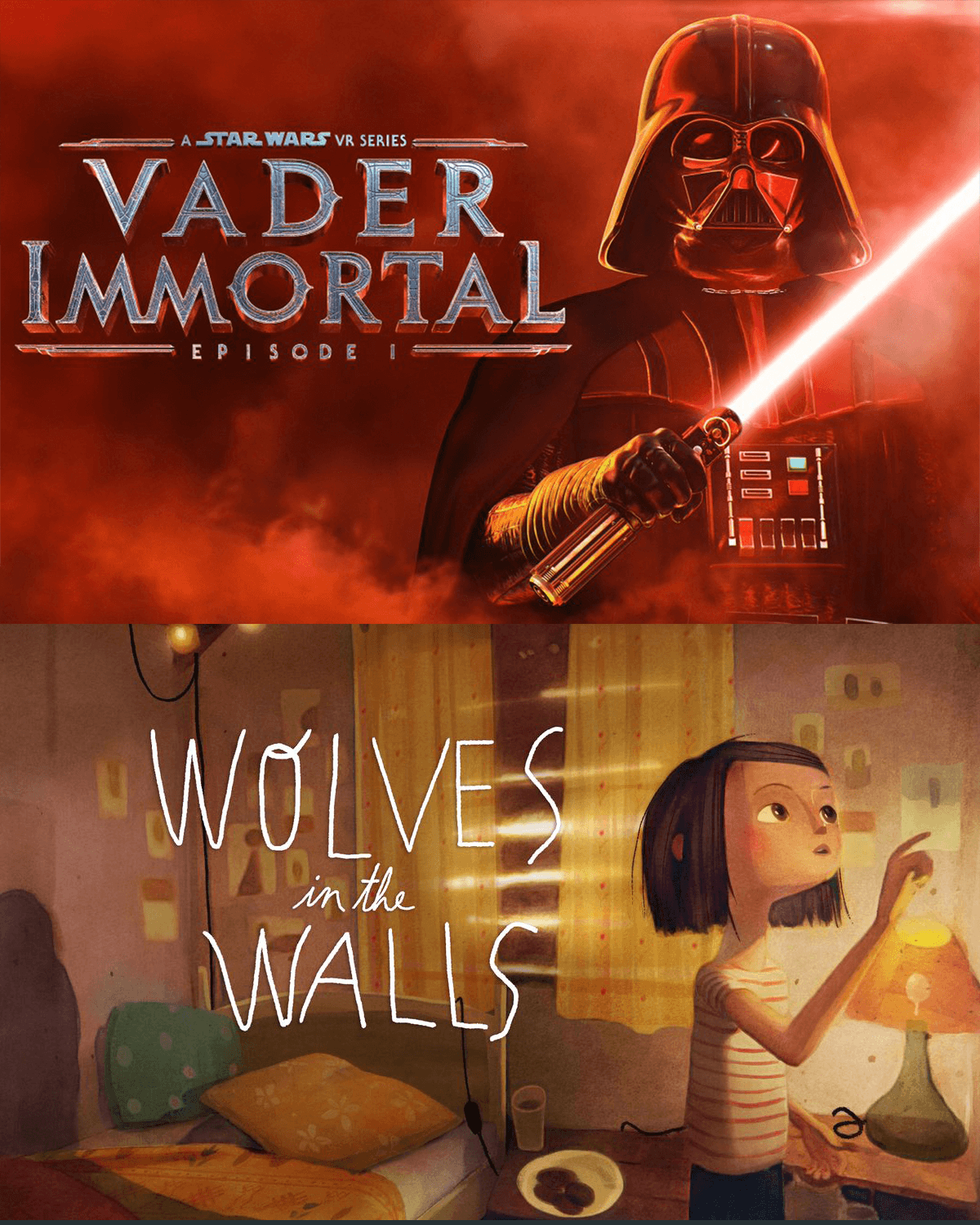

Google slips an interactive, virtual gallery in your pocket
Download the Google Arts & Culture app and tap to place their second “Pocket Gallery” into your office or home. An AR gallery space enlarges before you: the “Art of Color” exhibition showcases 33 famous artworks organized by color scheme. The virtual gallery is expansive, spanning multiple wings and likely requiring an empty room for full walking exploration. But double tap before paintings and teleport before a Van Gogh or Picasso work, then simply tap the canvas for more information on the history of the artwork. The paintings are represented in extremely high fidelity and the interactivity expands our conventional understanding of a museum placard. With the scale and quality of a roomscale VR experience, powered solely by Apple ARKit or Google ARCore, the experience is a fascinating re-imagination of gallery space.

Read more: Engadget (visuals), Next Reality
Snapchat added 13 million daily active users in Q2
LEGO’s haunted building sets include companion AR app experience
The Hidden Side is a new LEGO slate of eight building sets, including a haunted high school, a paranormal school bus, and a graveyard, all of which have augmented reality capabilities. Kids build out the small sets, download a companion app, and unlock mysteries and gameplay to bring the school or graveyard to life. Assume the perspective of one of the figures and discover ghosts around the virtual town. Tom Donaldson, SVP of Creative Play Lab at the Lego Group said, “We’re breaking the mould of gaming-first AR play experiences to create a new type of play where the physical world actually influences the AR layer, instead of the other way around.” Solve the mysteries haunting the town of Newbury before it’s too late: coming August 2019.
Read more: The Mirror, LEGO site (photo)

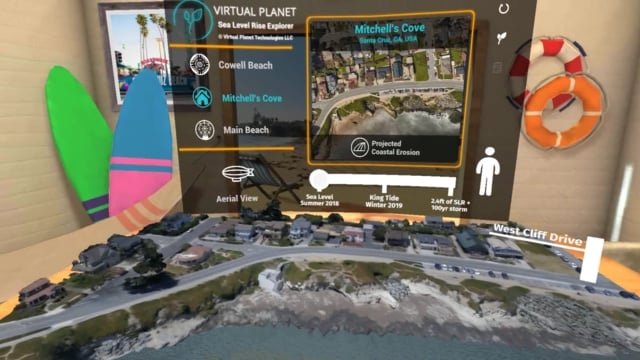
Santa Cruz VR experience visualizes impact of sea level rise
The City of Santa Cruz, California, and Dr. Juliano Calil (Virtual Planet) collaborated on a VR visualization for users to witness the stunning projection of 2.4 feet of sea level rise on the town’s coastline. The short experience is designed so that the City can spread awareness and facilitate active planning for the imminent threat of climate change: it will be deployed at community outreach events and eventually turned into a mobile app. The interactive “Sea Level Rise Explorer” visualizes many data points: sea level rise, wave energy, storm damage, property values, but also population, mortality rates, and social vulnerability. Using advanced drone photogrammetry, it is a striking case study of virtual reality’s potential to create a visceral understanding of an unfortunate reality.
Read more: Middlebury Institute
Charlie Brooker and Annabel Jones hint at Black Mirror VR adaptations
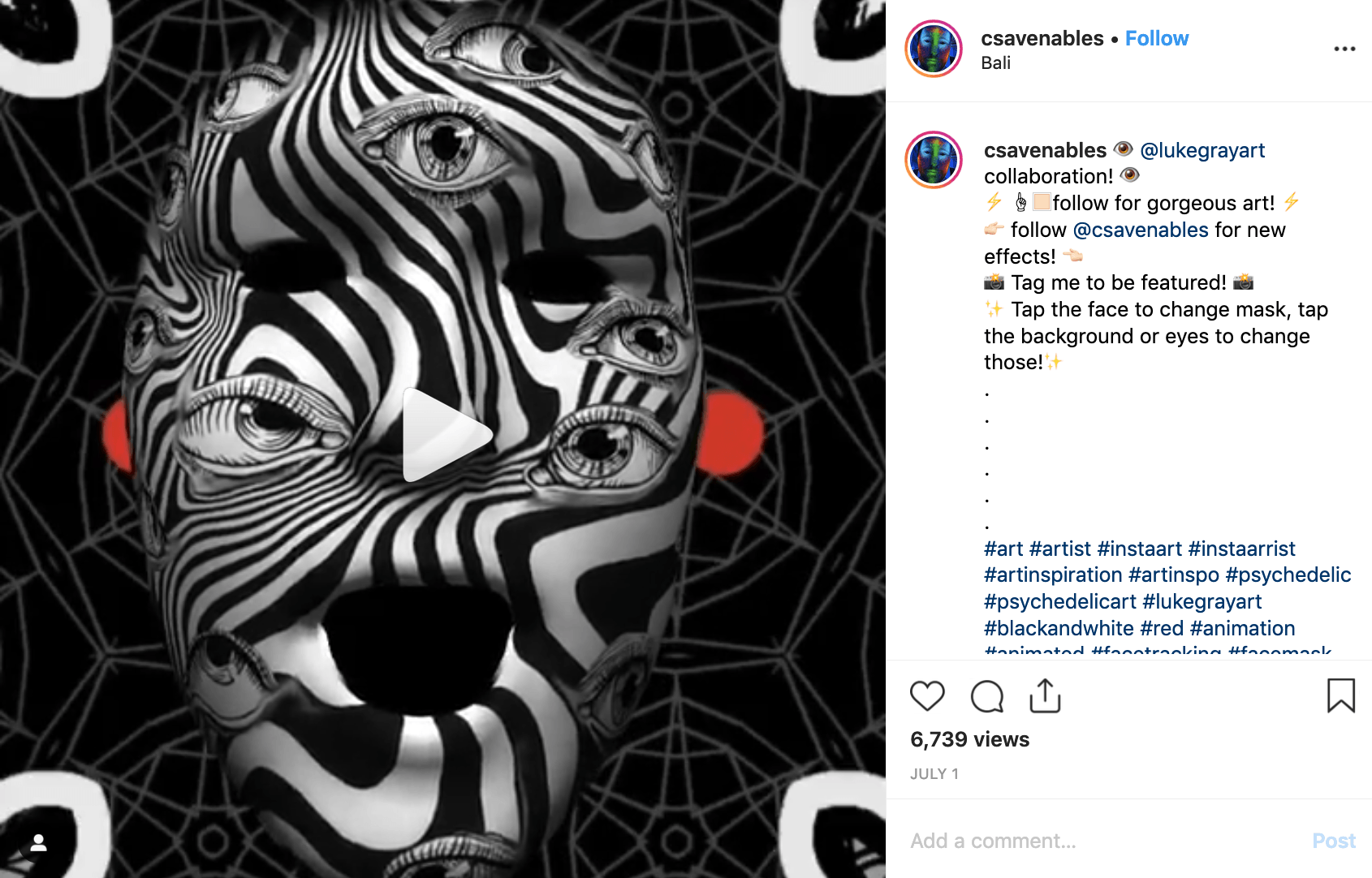
Instagram filter artist Christian Venables reports over 10 million impressions on some Spark AR projects within first 24 hours. Read more insights on Spark AR by Tom Emrich.
Porsche tests backseat VR entertainment in driverless cars
The carmaker and startup Holoride collaborated on a VR experience linked to the motion of the car — as the cars turn, the visuals in the virtual experience match, preventing motion sickness and allowing for intense immersion. Car sensors feed movement data into the headset in real time. Holoride has opened their technology to automakers to consider and demo. They hope to deploy VR experiences that correlate with navigation data to precisely time the game to the duration of the ride. VR finds another specified utility with in-car entertainment and gaming.
Read more: MediaPost, Holoride
